Christine Anu talks family, island history and making new album Waku
The ARIA Award-winning singer-songwriter welcomes Review to Rockhampton, as she wants us to see and hear it all on a whirlwind 24 hours in her inland home.
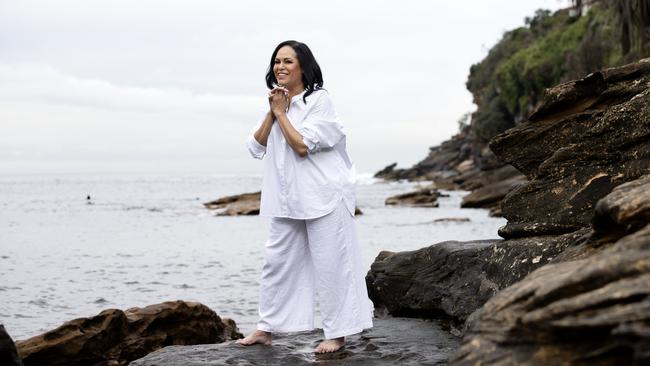
Home for Christine Anu was the Torres Strait island of Mabuyag, where she learned to sing, write and dance; talents that would soon attract the spotlight’s glare as she burned bright on the national stage as a young adult.
Home for Anu now is Rockhampton, where an unshakeable sense of duty recently brought her back to the central Queensland city in which she first landed in 1985 to complete high school. Today it’s where she will stay as long as her elderly mother needs her.
Bubbling away at a slow background simmer for several years is a collection of songs coloured by deep ties to Anu’s history, familial and professional. Titled Waku, it’s a heady, bilingual brew of sounds old and new, in which Anu tells cultural stories from her island upbringing through the vibrant lens of contemporary Australian music.
It’s a big story rooted in a rich weave of small details, and there’s much to discuss. When Review phones Anu with plans to visit Rockhampton for an interview, the ARIA award-winning artist dismisses our queries about nearby accommodation and instead kindly opens up her four-bedroom house, which sits atop a hill in the city’s north.
It’s a generous offer to put up a stranger under her roof for the night – let alone a nosy journalist with a notebook, recorder and a boatload of questions – but she accepts our profuse thanks with a casual wave of the hand as if it were a fait accompli.
“You’ll come to find I am that person – and I just imagine, my aunties and uncles would have gone: ‘You made him go and stay in a hotel? Ohhhhh!’ ” Anu, 54, says with a laugh, mimicking cries of shame and outrage. “I mean, I probably would if there was something I didn’t want him to see or hear …”
But Anu wants us to see and hear it all on a whirlwind 24 hours in her inland home.
From a beautiful winter’s morning trip out to the seaside and surrounds, to visiting her 87-year-old mum, to a home-cooked meal and a lookout surveying the city from above, what emerges is a portrait of a great Australian singer-songwriter on the cusp of issuing what could well be a life-defining work.
A blend of pride, confidence and optimism runs through her veins as she approaches the imminent release of Waku, which is three weeks from being heard far and wide when we meet in mid-July.
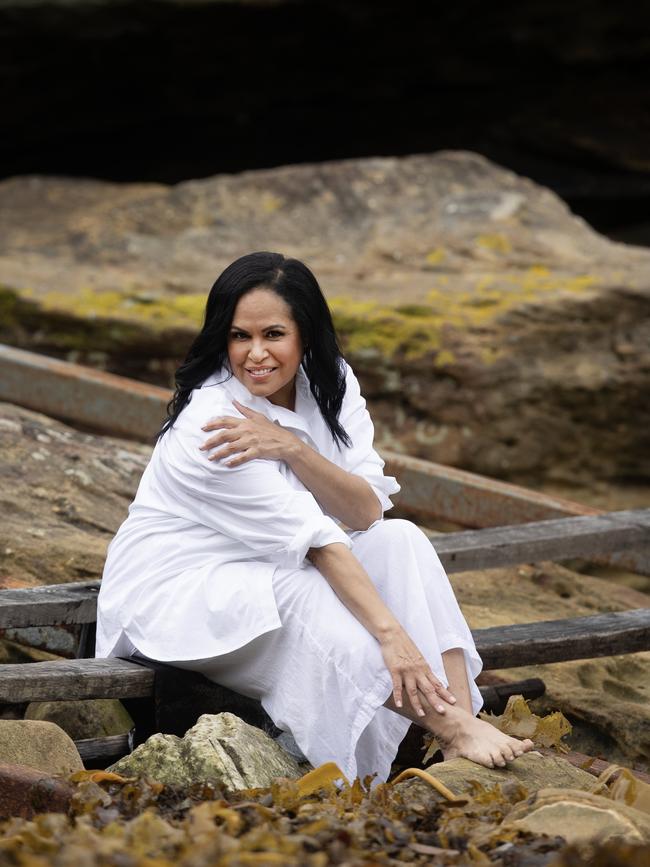
Though not usually one to make a song and dance of her career achievements, this time she is plotting a small soiree with friends and family on album release day and sketching out the finer details with her partner, Scott, who pilots us in his four-wheel drive with the ease and patience of a truck driver with 35 years’ service under his belt.
Over a delightful lunch of fish and chips at a pub in Yeppoon, a coastal town 42km northeast of Rockhampton, we dig deep into the story of Waku, which she describes as a “beautiful jewel box” left behind by her grandfather, Nadi Anu. “Every day I think about it and it makes my eyes water,” she says, beaming. “It makes me feel like I’m doing something really meaningful. This music has so much purpose because it’s doing with Granddad’s songs what he wanted the songs to be, for all of us.”
Born in Cairns in 1970 and reared on Mabuyag and in Brisbane and Rockhampton, Anu shifted to Sydney in 1987, aged 17, to study at a dance school but eventually found her way into live music while performing as a backing singer with Neil Murray and the Rainmakers in 1992.
Murray was a singer, songwriter, guitarist and co-founder of the mixed-race Northern Territory rock group Warumpi Band, which issued two albums and toured extensively until falling into inactivity in about 1988.
When Anu joined Murray’s subsequent band, she got an eight-month crash course in rock ’n’ roll school, chiefly playing pub gigs in and around Sydney, travelling in tightly packed vans and learning how to engage with audiences.
In the course of learning Murray’s songs, one that wasn’t initially part of the set list was My Island Home, a track from the Warumpis’ second album that he wrote for singer George Burarrwanga after Murray had spent a week with him on country in Arnhem Land.
Its sense of longing to return to a beloved place is palpable: “For I come from the saltwater people / We’ve always lived by the sea,” sang Burarrwanga. “Now I’m out here west of Alice Springs / With a wife and a family / And my island home / Is waiting for me.”
Though not a chart hit, it was well-known enough to draw shouted requests from the crowd at most of Murray’s pub gigs, to the point where he eventually asked Anu to step up and sing it.
As we head back from Yeppoon via the seaside suburb of Emu Park, Anu recalls: “I said, ‘I can’t do that, Neil – them fellas are gonna hate it if somebody else is singing the song. They want it to come from a true Warumpi Band fella.’ ”
But the songwriter’s response was wise; he looked beyond her momentary embarrassment towards the horizon of tomorrows to come. Songs are stories that come from out there, he said, and when they become a song it belongs out there again. It belongs to the people.
It became a centrepiece of the Rainmakers’ live sets, with Anu confidently singing it on her own after a couple of lyrical tweaks (”Now I’m down here living in the city / With my man and a family”). When time came to record demos for her prospective debut album, one of the songs she tracked was her version of My Island Home in an arrangement backed by Murray and his band.
“It all landed beautifully, all at this wonderful time, when we were just trying to find a direction and a focus for the sound of the album,” she says, her eyes on the road back to Rockhampton. “That’s your debut album; that’s songs that you’re going to be singing for the rest of your life.”

That album, titled Stylin’ Up, was a confident and eclectic blend of pop, rock and dance styles. It was issued in 1995 via Mushroom Records’ White label, and it announced a major talent. Anu’s extraordinary voice was front and centre, singing both in English and in her traditional language.
The album’s songs ranged from a Torres Strait Island nursery rhyme (Monkey and the Turtle) to an unabashed dancefloor celebration (Party). Produced and co-written with David Bridie, Stylin’ Up still sounds fresh today; it achieved platinum sales of more than 70,000 copies and earned her an ARIA award for best female artist, while Murray’s Island Home won song of the year at the APRA Awards in 1995.
Reflecting on those first few steps in her recording career, Anu says: “Island Home was that spider in the web: it was the thing that attracted everything, all the songs that ended up being on that album, and being a part of my legacy and helping to shape the artist that I have become. It fit with my ‘brand’; it fit with who I am as a person. My Island Home was always that core prayer that just called out, pulled everything into it and informed not just that record but the rest of my career and how that would play out.”
At the closing ceremony of the Sydney Olympic Games in 2000, Anu was given the plum – and nerve-racking – spot of opening proceedings.
She rose to the occasion to give a towering performance of her signature song on a bright blue stage designed in the shape of a flower, while surrounded by a Bangarra dance troupe and hundreds of umbrella-twirling people on the grassy stadium floor.

In contrast to a later closing ceremony appearance by Sydney rock band Midnight Oil – wherein the five musicians wore black ‘Sorry suits’ to make a statement on behalf of Indigenous Australians, a divisive decision about which they still cop stick – Anu’s breathtaking five-minute performance was apolitical and inclusive.
With great pride, she closes her eyes and recites the “Earth Beat” ending verse that Murray added to the song she delivered in that landmark appearance on the world’s stage, sung atop a blue globe lifted high above the dancers below:
My home is Australia
We are a land bound by sea
And though I may travel far across the ocean
It will never forget me
My island home, surrounded by sea
My island home, in a cosmic sea.
Much has changed since that sparkling night in Sydney 24 years ago. With eight albums to Anu’s name – most recently 2015’s live reimagining, titled ReStylin’ Up – her recording career has been prosperous, though none of these releases resonated as strongly with the public as her 1995 debut. Away from the studio, her acting CV includes film roles in Moulin Rouge! (2001) and The Matrix Reloaded (2003), and in musical theatre productions such as South Pacific (2013) and Hairspray (2016).
When Review visits Rockhampton, Anu has just returned from a festival appearance in Mackay and soon will perform at the Mount Isa Rodeo alongside Kasey Chambers. Since 2015, she has worked as a national presenter for ABC radio in the weekend evenings slot, a role that chimes nicely with her live work while also inspiring her artistically when she interviews fellow musicians and performers. Radio, she says, offers a simple but potent proposition: “It’s you, your voice and the audience, and the story that you’re delivering. It really matters; it’s a beautiful storytelling medium.”
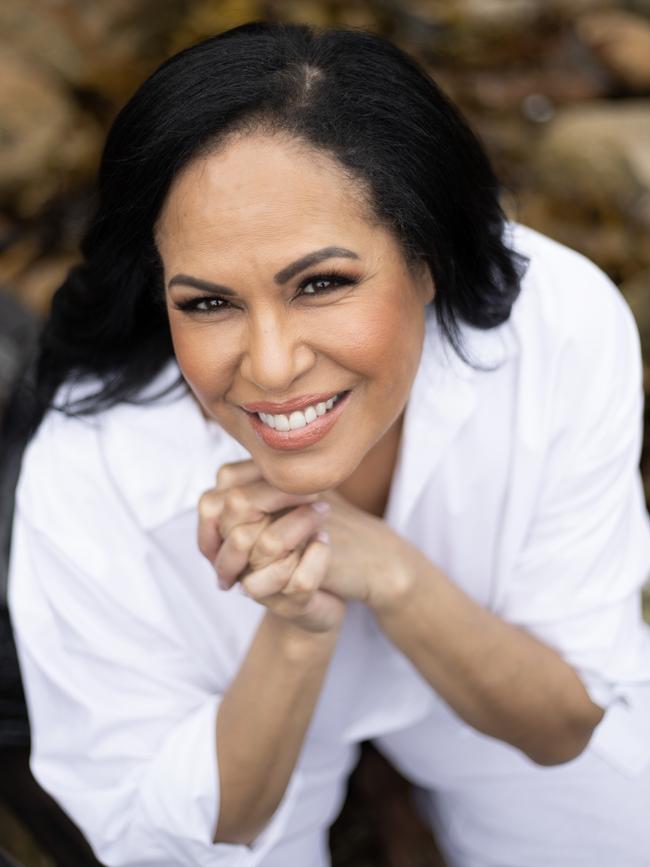
The long road to her forthcoming ninth album began in 2009 when she appeared as a guest on the long-running SBS reality TV series Who Do You Think You Are? – wherein celebrities are profiled while tracing their ancestry as far back as possible – in an episode written and directed by Jane Manning.
On a trip to Cambridge, England, Anu first laid her wide eyes on her family tree, which had been documented by British researchers. On a return visit to her mother’s birthplace of Saibai, a Torres Strait island just south of Papua New Guinea, she met cousins of her grandfather, Nadi Anu, to film them singing some of his songs on camera while she recorded the lyrics in her notebook.
Nadi died when Anu was nine but she retains a few strong memories of his presence, particularly the smell of his loose-leaf tobacco mixed with Vicks topical ointment. He was a trochus shell diver, diving captain and hobbyist musician who composed songs while navigating the islands by boat. When World War II came to the region, the skills of he and his countrymen were prized by the Australian Defence Force.
At the Torres Strait Heritage Museum on Horn Island, researcher Vanessa Seekee told Anu that her grandfather earned the rank of corporal – a rare honour for Torres Strait Island infantrymen at the time, which indicated his strong leadership abilities.
Seekee also showed her the first photo Anu had seen of Nadi in military uniform; in the picture, he was about the same age as the singer was at the time of filming. “With the knowledge that you’re learning, you can pass down the stories so your children will know about their great-grandfather,” Seekee told her, to which Anu replied: “I feel deadly. This photograph changes my life.” Overcome with emotion, she walked away from the camera to compose herself.
But the real mindblower was in Canberra at the Australian Institute of Aboriginal and Torres Strait Islander Studies, whose extensive collection included notes and recordings from European ethnomusicologist Wolfgang Laade, who met Nadi in the mid-1950s and captured his songs for posterity.
On entering the institute’s sound vault, she heard Nadi’s deep, sonorous and undeniably melodious voice for the first time. To her trained ears, it quickly became apparent that he was a man who understood the power of song and its ability to travel across time and space.
It’s easy to draw a direct line between that eye-opening documentary experience in 2009 and Anu’s newest music, because her new album Waku is composed chiefly of songs written by Nadi decades ago and brought back to life by his granddaughter.
Its full title is Waku – Minaral a Minalay, and to listeners accustomed to the English language, only a handful of song titles jump out at a glance: The Coming Monsoon, Tobacco and Vicks, When It Rains, and The Crab and the Suckerfish (Gapu a Githalay).
Most of the 17 tracks keep the original titles, lyrics and meanings – in the original KLY/KKY languages (Kala Lagaw Ya/Kalau Kawau Ya) – as a result of careful consultation with a distant cousin, Jensen Warusam, who acted as her “cultural guru” and translator throughout its creation.
If all this reaching back through history sounds like an adventurous move for an acclaimed Australian singer-songwriter, you’re right. But Anu wouldn’t have it any other way: this was the album she simply had to make, across several patient years dating back to the beginning of the Covid pandemic in 2020, when she relocated from Wollongong to Rockhampton.
Why? To be near her mum, Zipporah Whap, amid Queensland closing its border to the rest of the country.
“I can’t speak for the rest of my siblings, but what if I couldn’t go and say goodbye to Mum?” she says. “I don’t think I’d ever come out the other end of that, really; I can’t even think about that, or who I would be.”
Now 87, Zipporah had been living independently at home, but the death of her husband Misron in 2019 and two recent falls have forced a change in arrangements.
“She’s got dementia, and I want to be that constant face,” Anu says. When we visit Zipporah at her residential aged care home, she is resting in bed after a morning of medical appointments but brightens up at the sight of Anu and Scott entering the room.
Surrounded by photographs of her children and her 13 great-grandchildren, this white-haired “grand old lady” of the Anu family locks eyes with her daughter as they share a gorgeous moment, by singing in unison a short song that she and her husband had composed decades ago, while watching the twin-engine plane spiriting Anu and her sister Helen away to Rockhampton in 1985. (Footage of their song is included below.)
That loss was so keenly felt that they soon followed their daughters to central Queensland; in a curious symmetry, that song of farewell for their daughters also foretold their own decision to leave Mabuyag Island.
This sort of historical echo can be heard throughout Waku, which features Bridie on production and co-writing duties, just like her 1995 debut.
“He’s a phenomenal producer,” she says of Bridie. “He’s just genius, and I find him an absolute great human being to work with.”
In KLY/KKY languages, a waku is a mat, but its cultural function is more significant than merely ornamental. A waku is presented at important life moments: at birth, initiation, betrothment, marriage and, finally, at death. Waku marks the beginning and announces the end.
Because Nadi preserved his life through his songs, his granddaughter has been able to weave them into a pattern that re-emerges in 2024, long after his death and almost 70 years after those songs were luckily captured and recorded.
Importantly, his musical achievements will be officially recognised as music rights organisation APRA AMCOS has agreed to credit Nadi Anu posthumously for his songwriting work on most of these songs.
As well, the intergenerational weaving of this musical family continues apace: Anu’s 21-year-old daughter, Zipporah Corser-Anu, appears throughout Waku in a choir of backing vocals expertly blended into rich harmony.
In the liner notes, its numerous recording locations give an indication of its truly international flavour: Cairns, New Zealand, PNG, the Torres Strait Islands and Solomon Islands. The producer then pulled all these threads together in his studio near Apollo Bay in southwestern Victoria by folding in drums, bass, synth, guitars, strings and traditional island percussion instrumentation.
“It was a wonderful record to make, and I really appreciate Christine; we work as a good team, I think,” Bridie tells Review. “I’d love for people to hear it, and for this to be an important Australian record, from the Torres Strait. I’d like people to reconnect with Christine as a really important Torres Strait woman of culture – and of substance.”
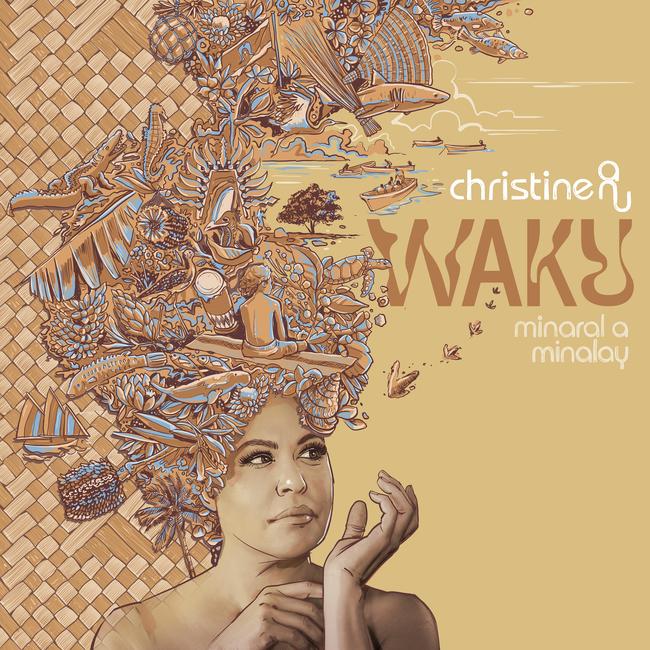
Our day of adventure and conversation culminates with Anu in her kitchen, preparing a dinner of curried chicken wings and coconut rice, while getting happily distracted by Review’s queries about the long and winding story of Waku.
“I love this album because I finally get to show a side of myself that people don’t know about,” she says, while chopping cucumbers. “It’s music that people wouldn’t think of – traditional music in language – and think ‘Christine Anu’. But this has been a lovely journey down, through songs.”
That sense of pride is reinforced the following day when Scott steers us up Mount Archer to give a glorious overview of the city limits and the land beyond. As the sun shines on us amid a windy winter’s morning, Anu is asked to look to the future, but her chosen circumstance means she can’t see too far ahead for now.
“The beauty of coming up here and taking care of Mum is that you’ve just got to live in the moment,” she says quietly. “I’m not leaving here until all of that business is settled. She’s here with us, and she’s strong; as long as she’s here, I intend to be with her.”
But without being prompted, her optimistic nature turns towards what might come in the wake of Waku.
“This one’s just so different,” she says. “I’m creating something that I’m hoping is very much a tool that can be studied by musicians and music lovers, and that it has its place in schools, in the education curriculum, as a way of talking about writing in language, and putting the cultural concepts together with making music for Western ears – but not limiting it to just that.”
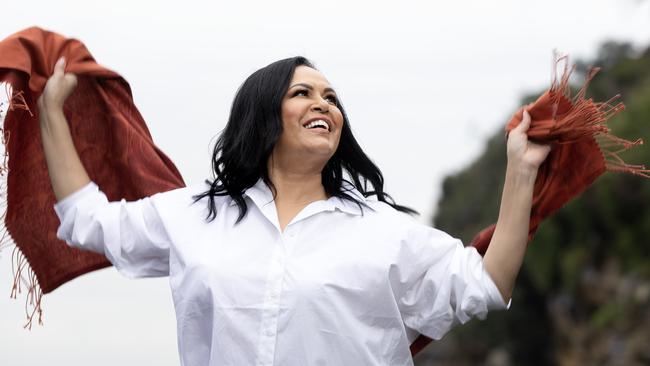
Looking out from Mount Archer across the Fitzroy River, Anu says she has always felt that her role in the public eye has been to open doors for her fellow Torres Strait Islanders, who rarely saw themselves in popular Australian culture. A story that began in her family will soon be told to both her people and the wider world.
That story is Waku, which is at once an album, a statement and a generous offer. This is your mat: come and walk along it. Once stories become songs, they belong to the people.
Waku – Minaral a Minalay is released on Friday, August 2, via ABC Music. Christine Anu will perform in Mount Isa (August 8), Cairns (August 23) and Townsville (October 13). The writer travelled to Rockhampton as a guest of ABC Music.




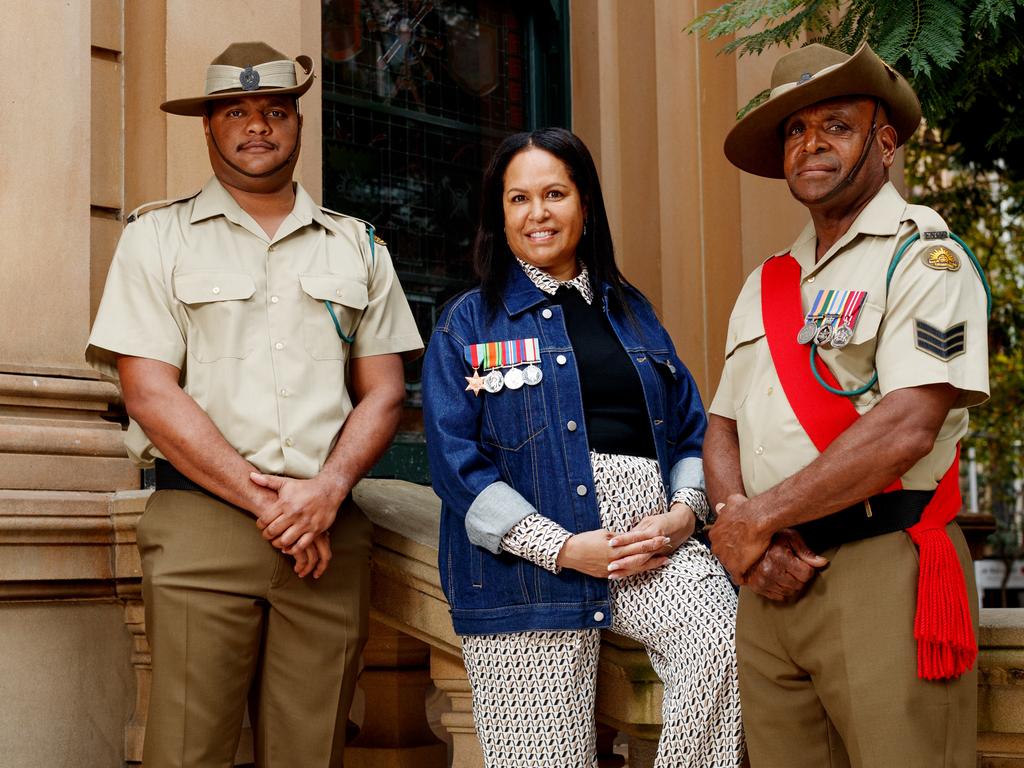
To join the conversation, please log in. Don't have an account? Register
Join the conversation, you are commenting as Logout